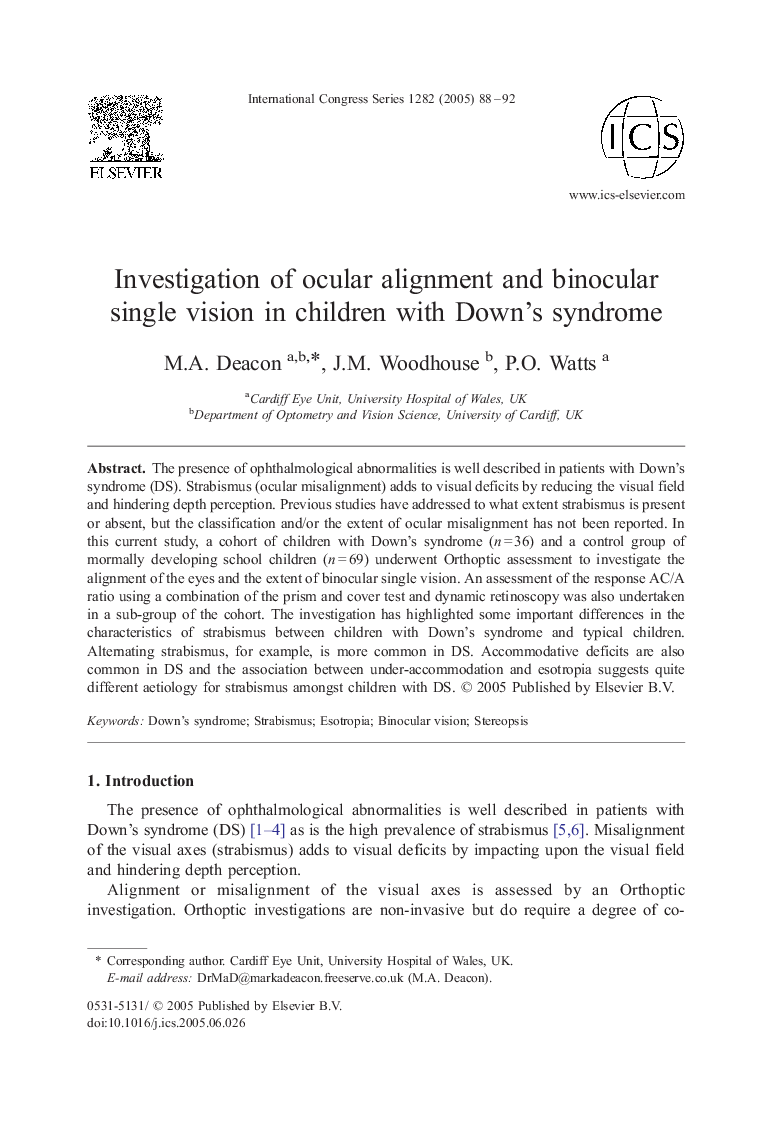| Article ID | Journal | Published Year | Pages | File Type |
|---|---|---|---|---|
| 9021519 | International Congress Series | 2005 | 5 Pages |
Abstract
The presence of ophthalmological abnormalities is well described in patients with Down's syndrome (DS). Strabismus (ocular misalignment) adds to visual deficits by reducing the visual field and hindering depth perception. Previous studies have addressed to what extent strabismus is present or absent, but the classification and/or the extent of ocular misalignment has not been reported. In this current study, a cohort of children with Down's syndrome (n = 36) and a control group of mormally developing school children (n = 69) underwent Orthoptic assessment to investigate the alignment of the eyes and the extent of binocular single vision. An assessment of the response AC/A ratio using a combination of the prism and cover test and dynamic retinoscopy was also undertaken in a sub-group of the cohort. The investigation has highlighted some important differences in the characteristics of strabismus between children with Down's syndrome and typical children. Alternating strabismus, for example, is more common in DS. Accommodative deficits are also common in DS and the association between under-accommodation and esotropia suggests quite different aetiology for strabismus amongst children with DS.
Related Topics
Life Sciences
Biochemistry, Genetics and Molecular Biology
Molecular Biology
Authors
M.A. Deacon, J.M. Woodhouse, P.O. Watts,
